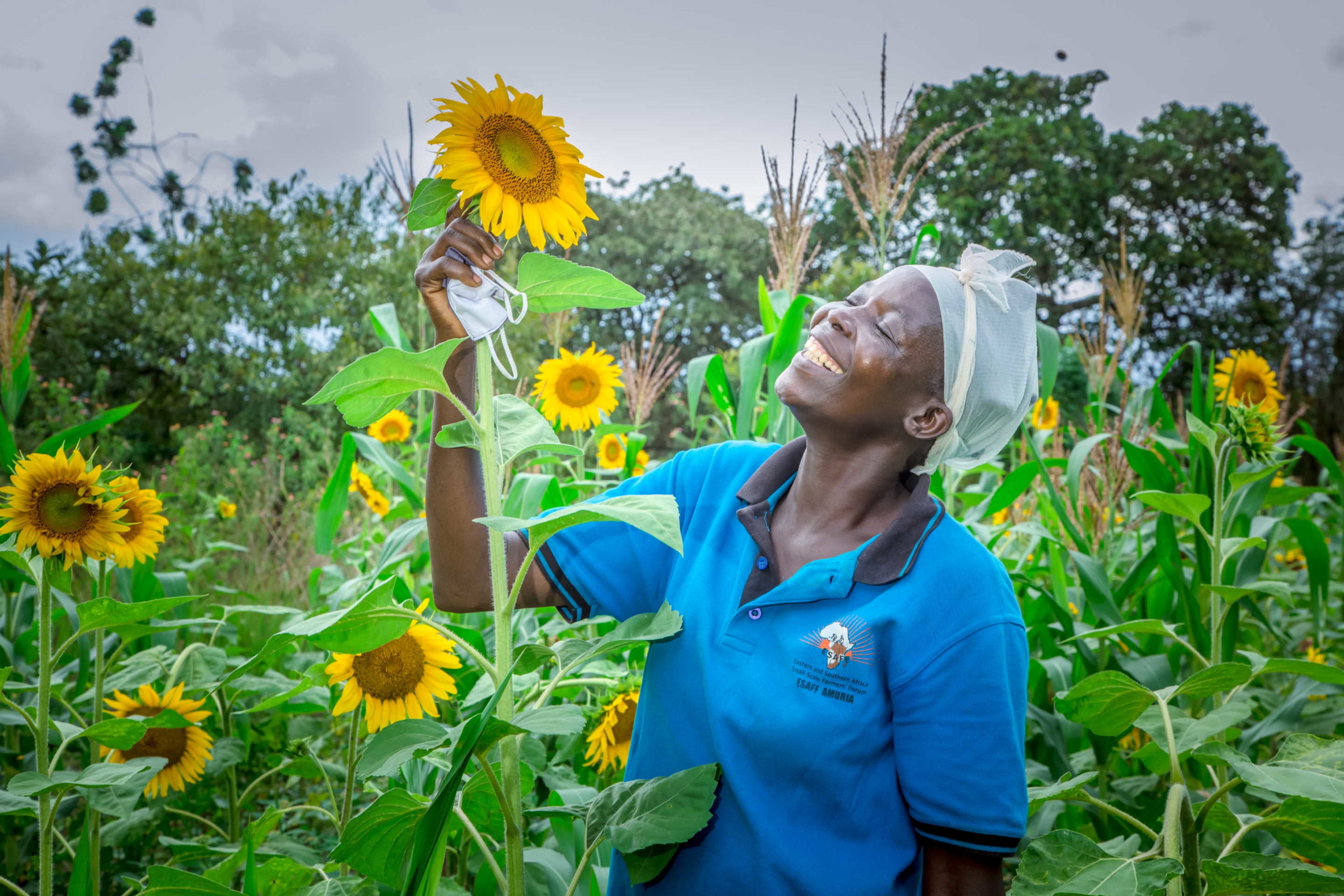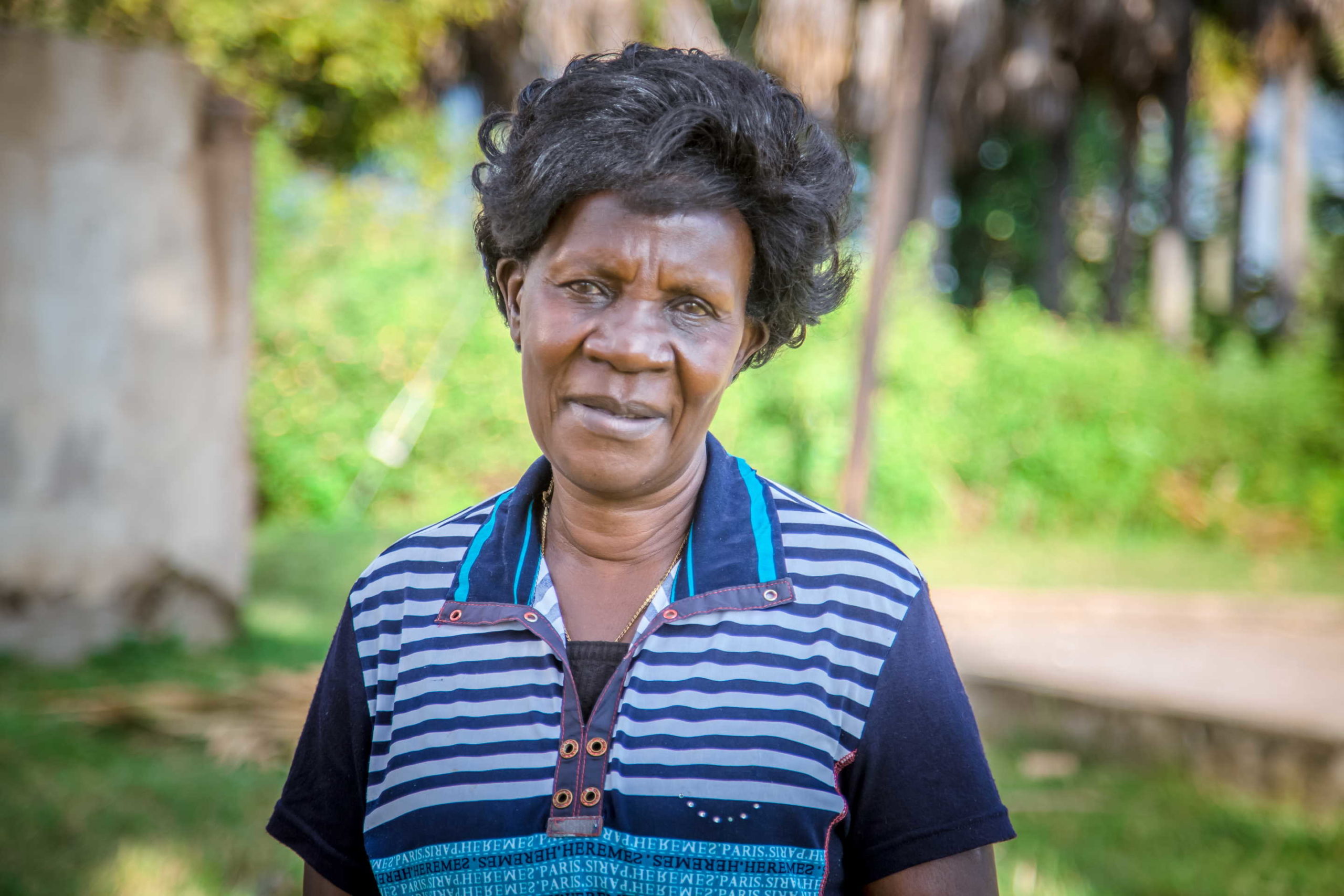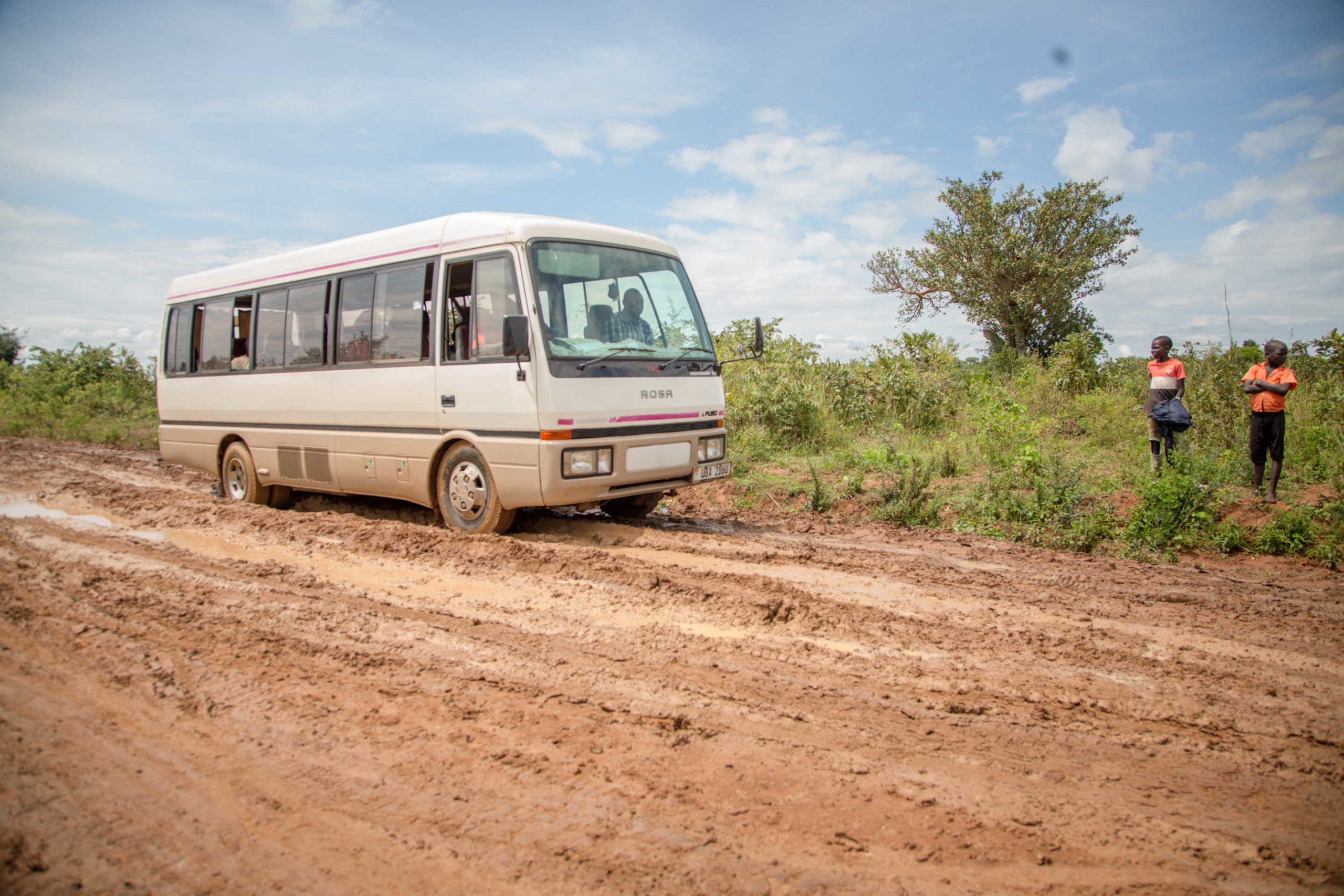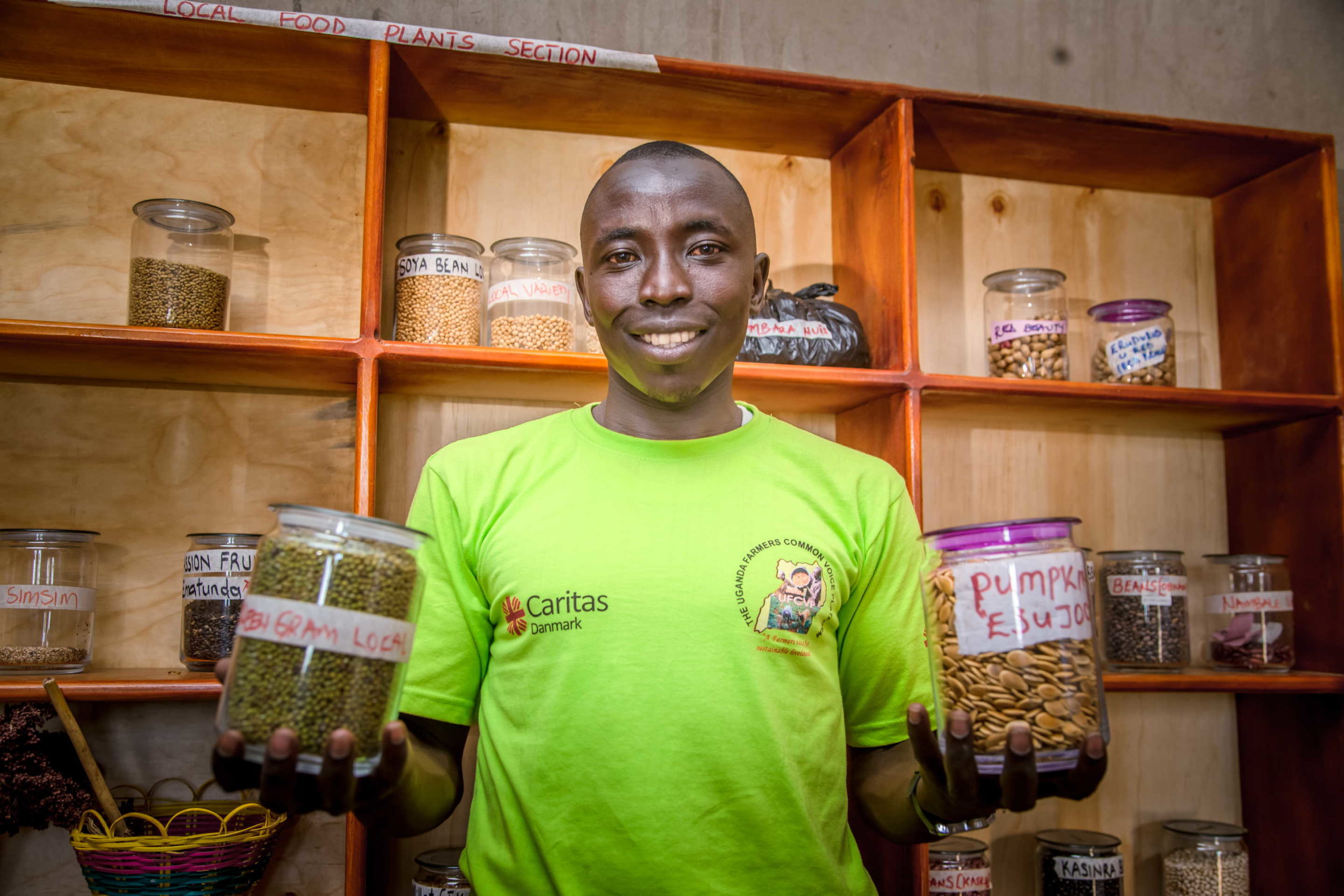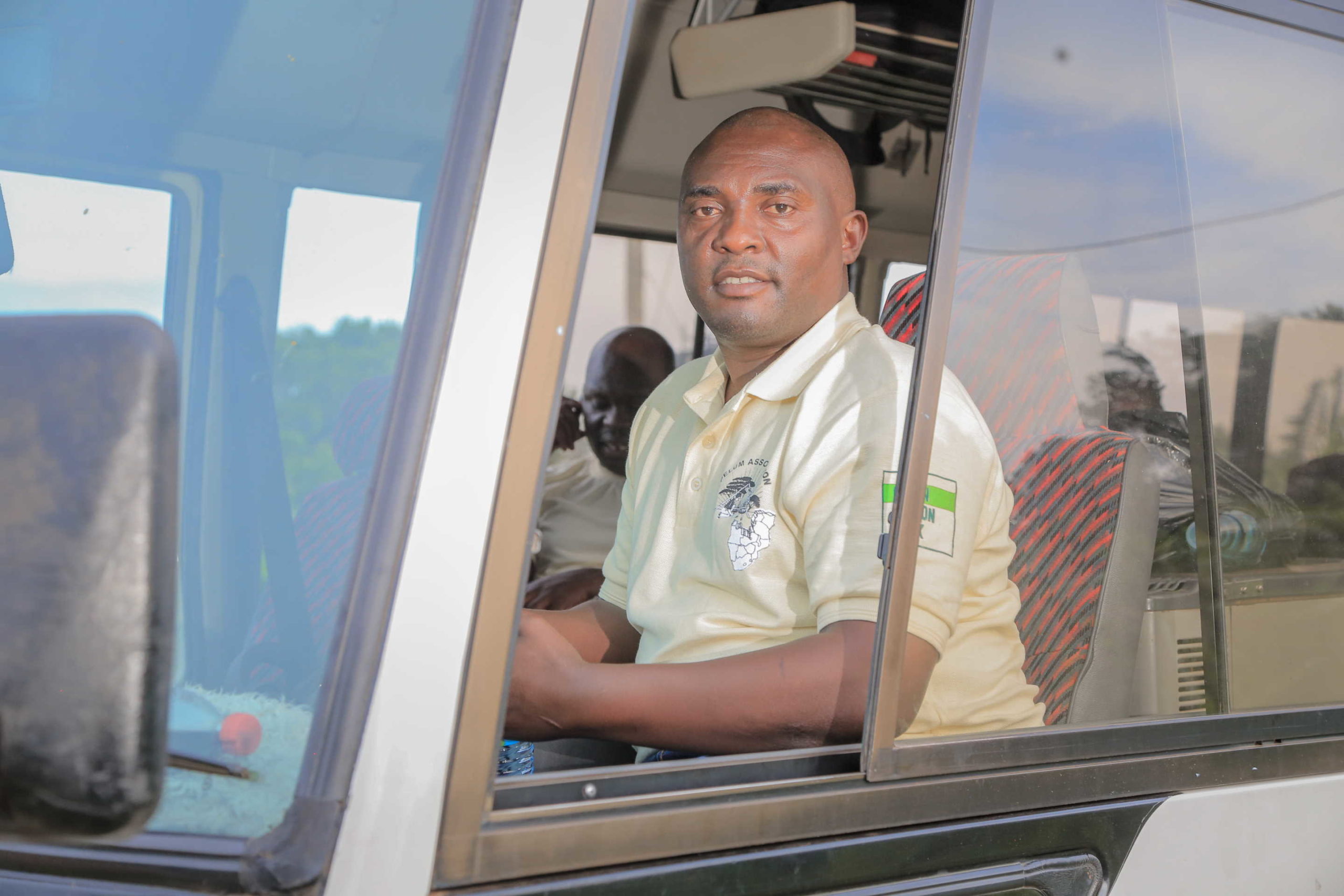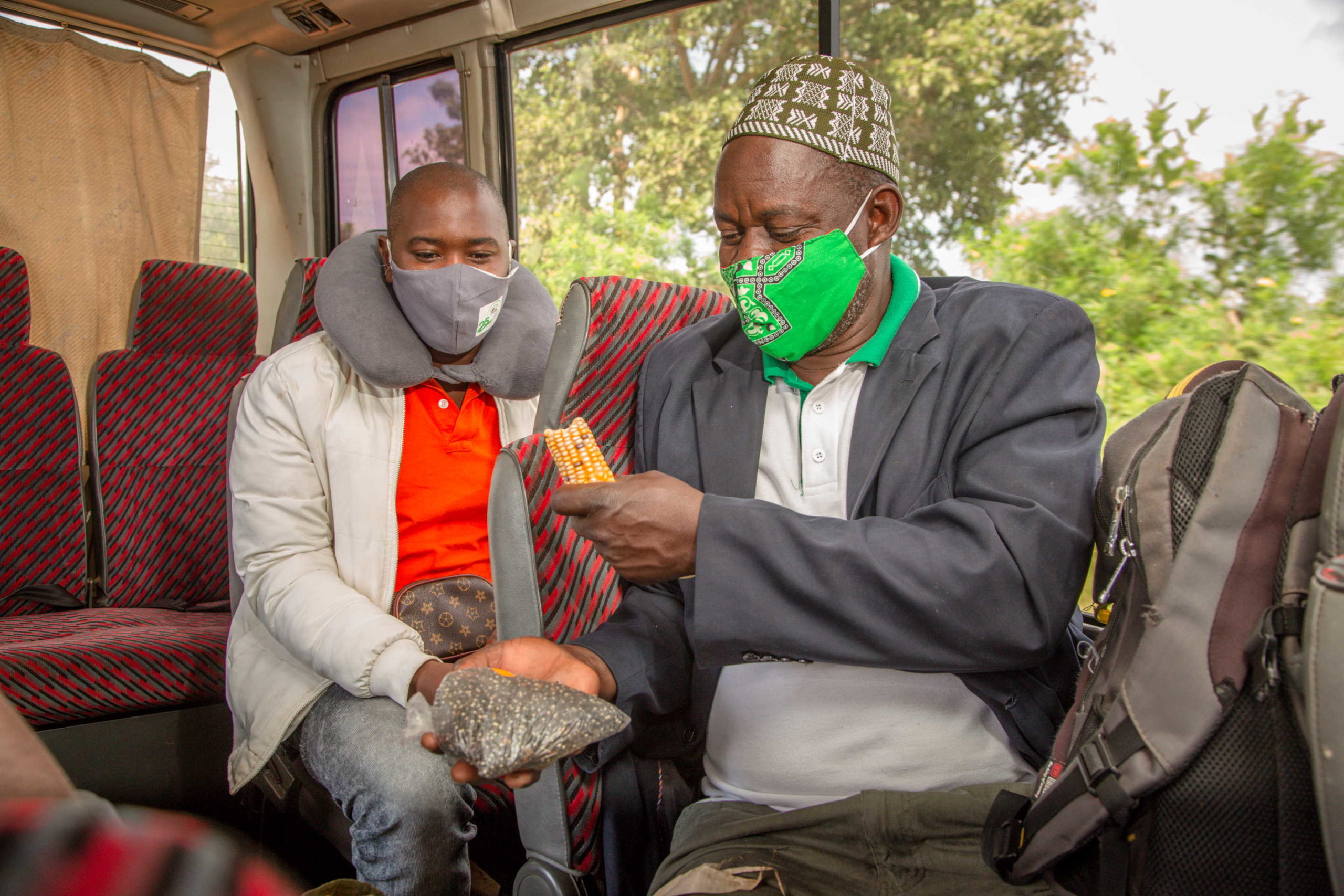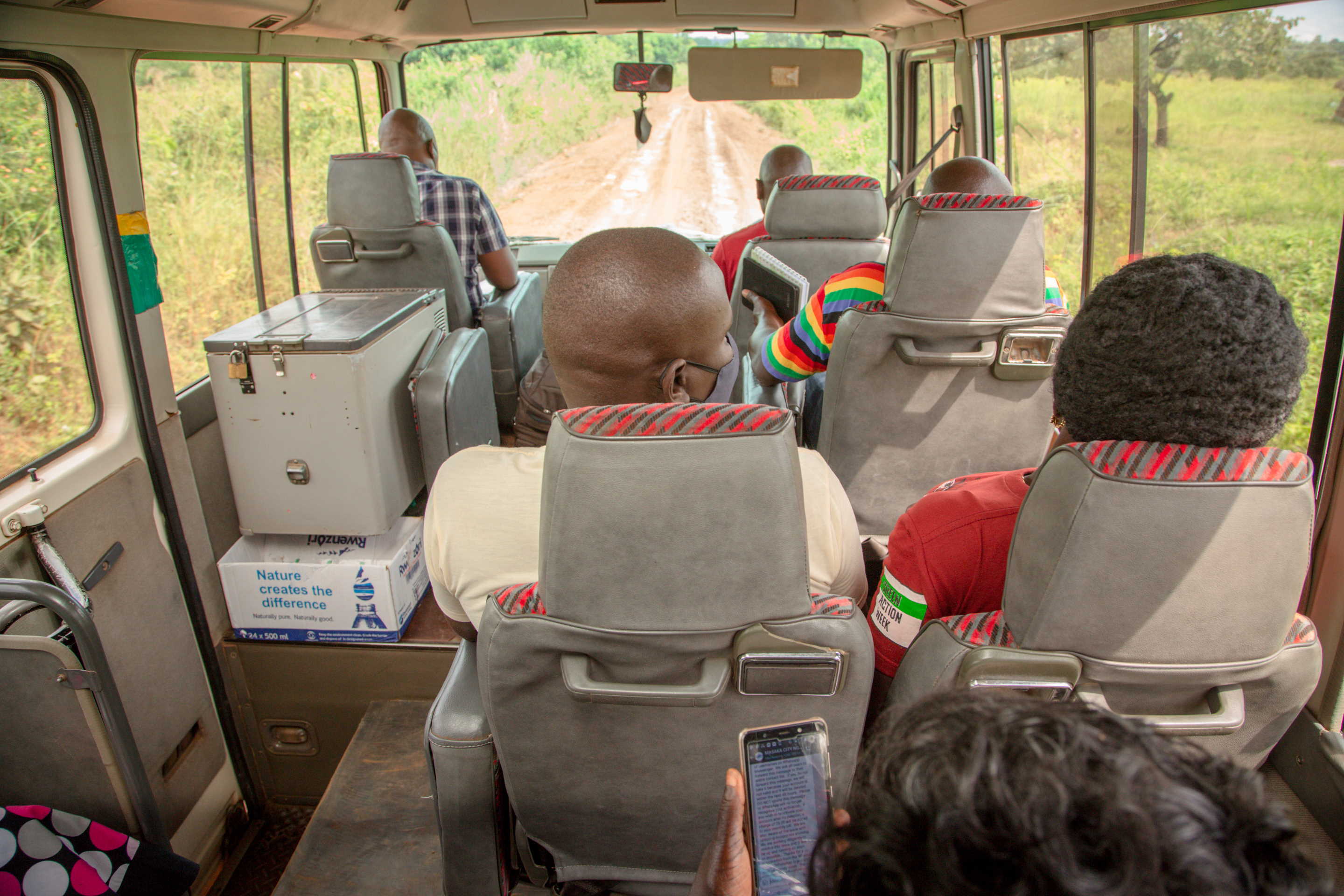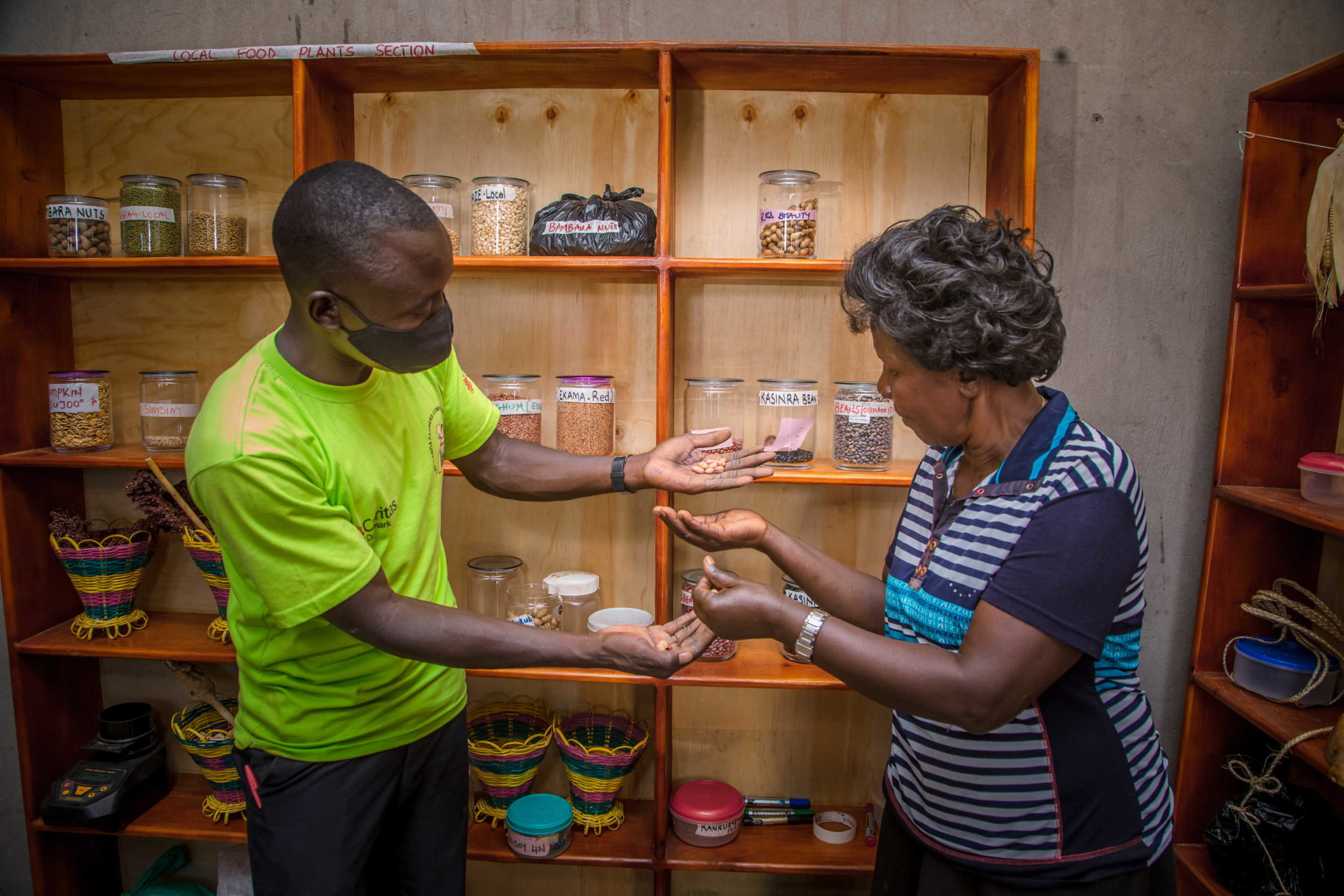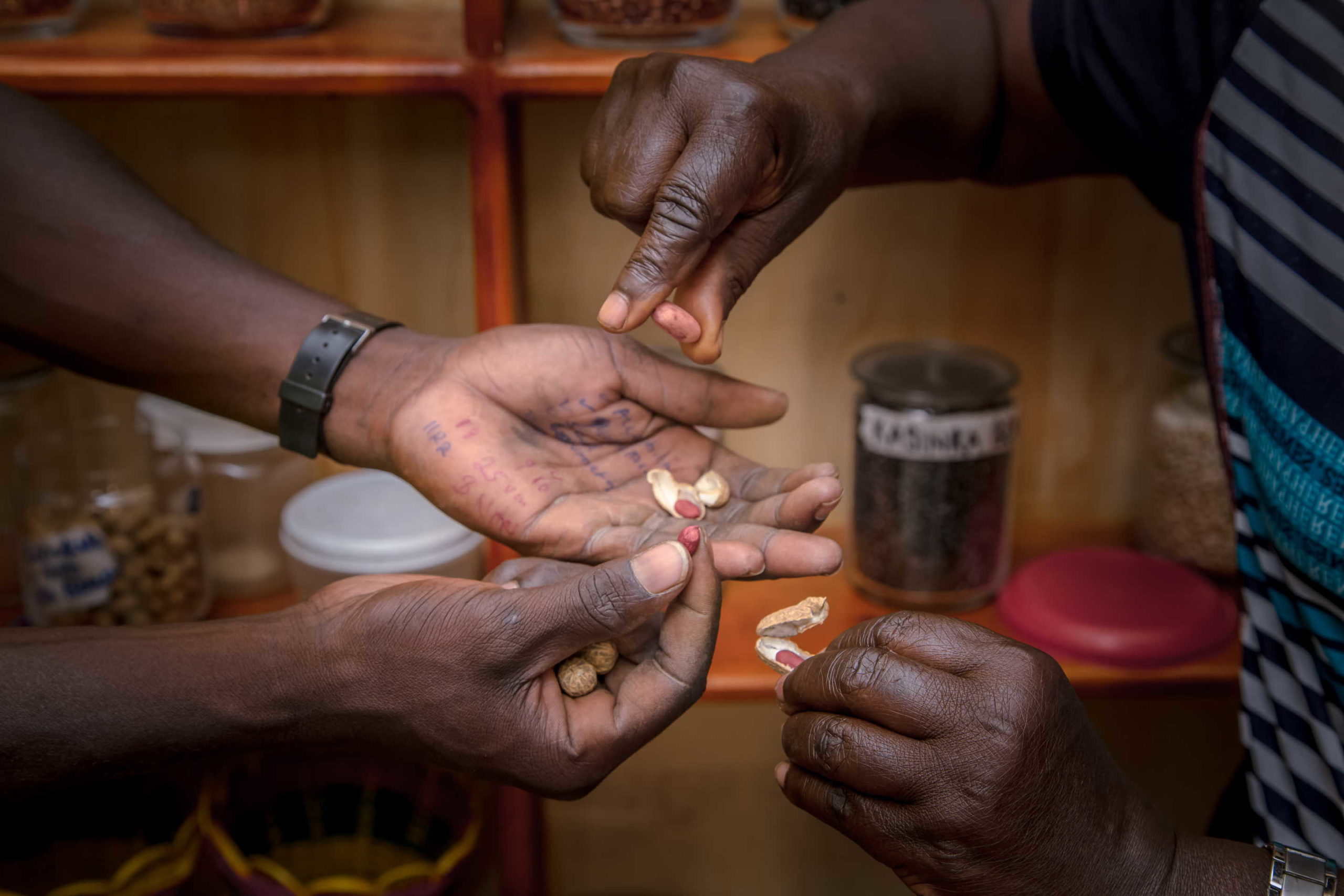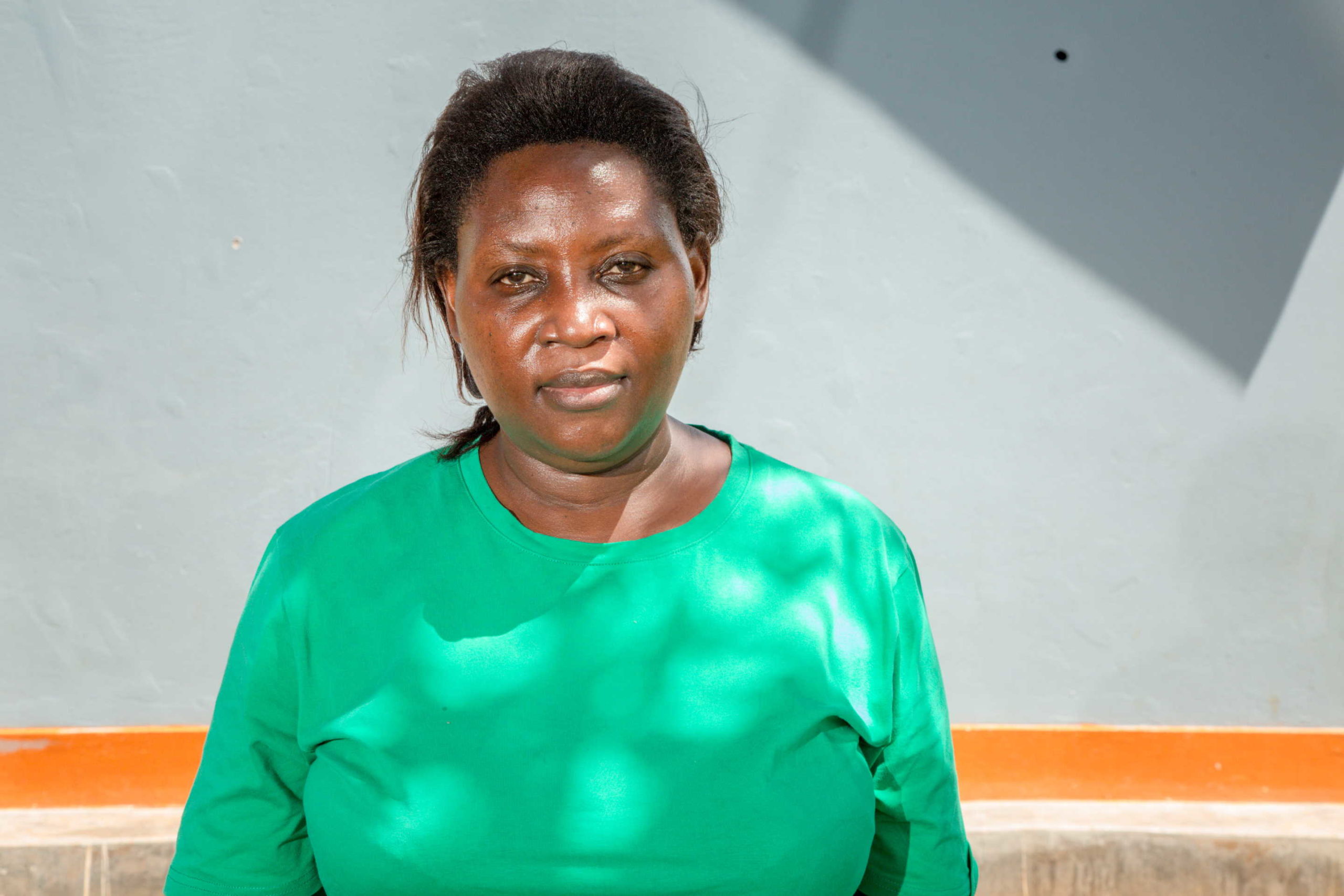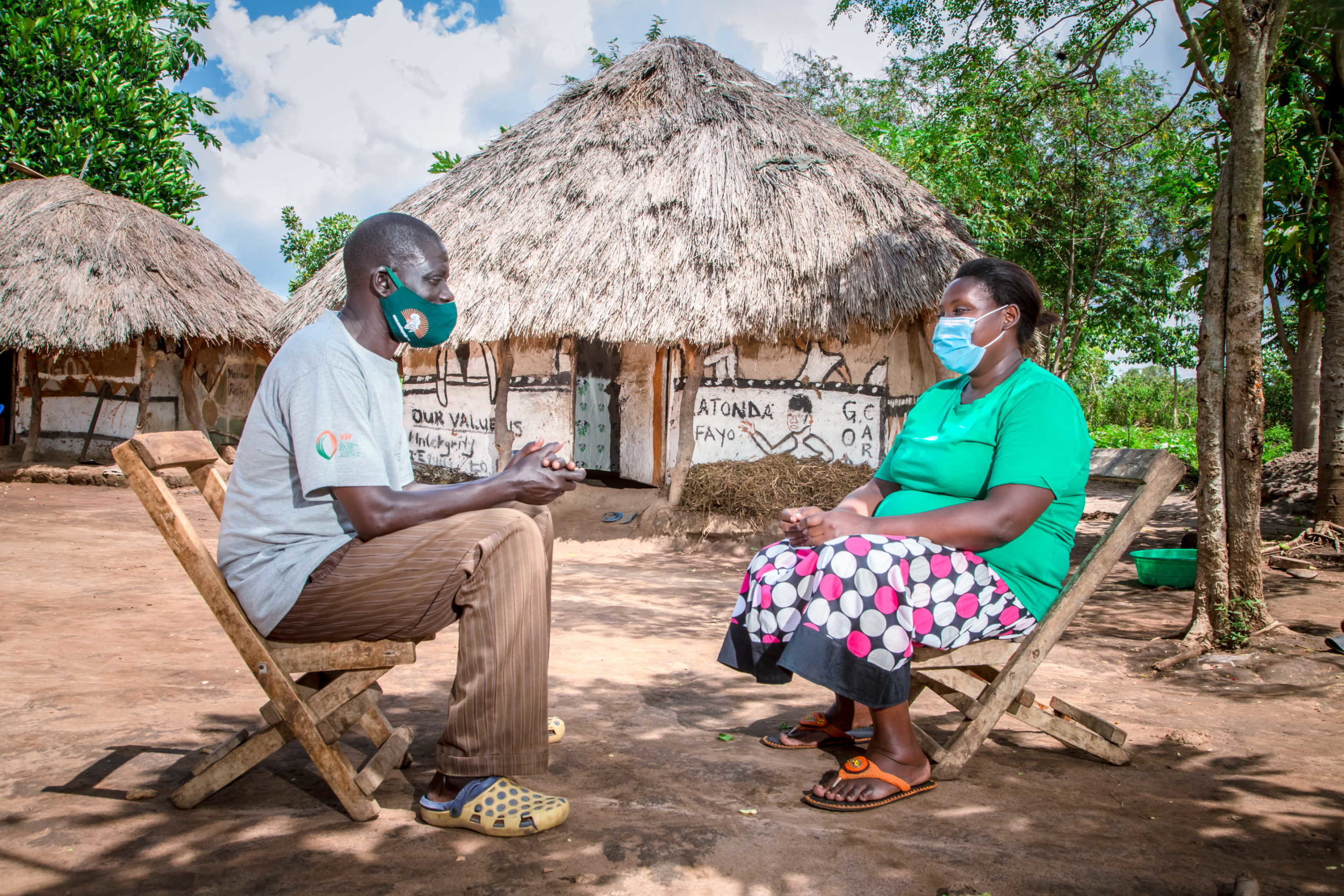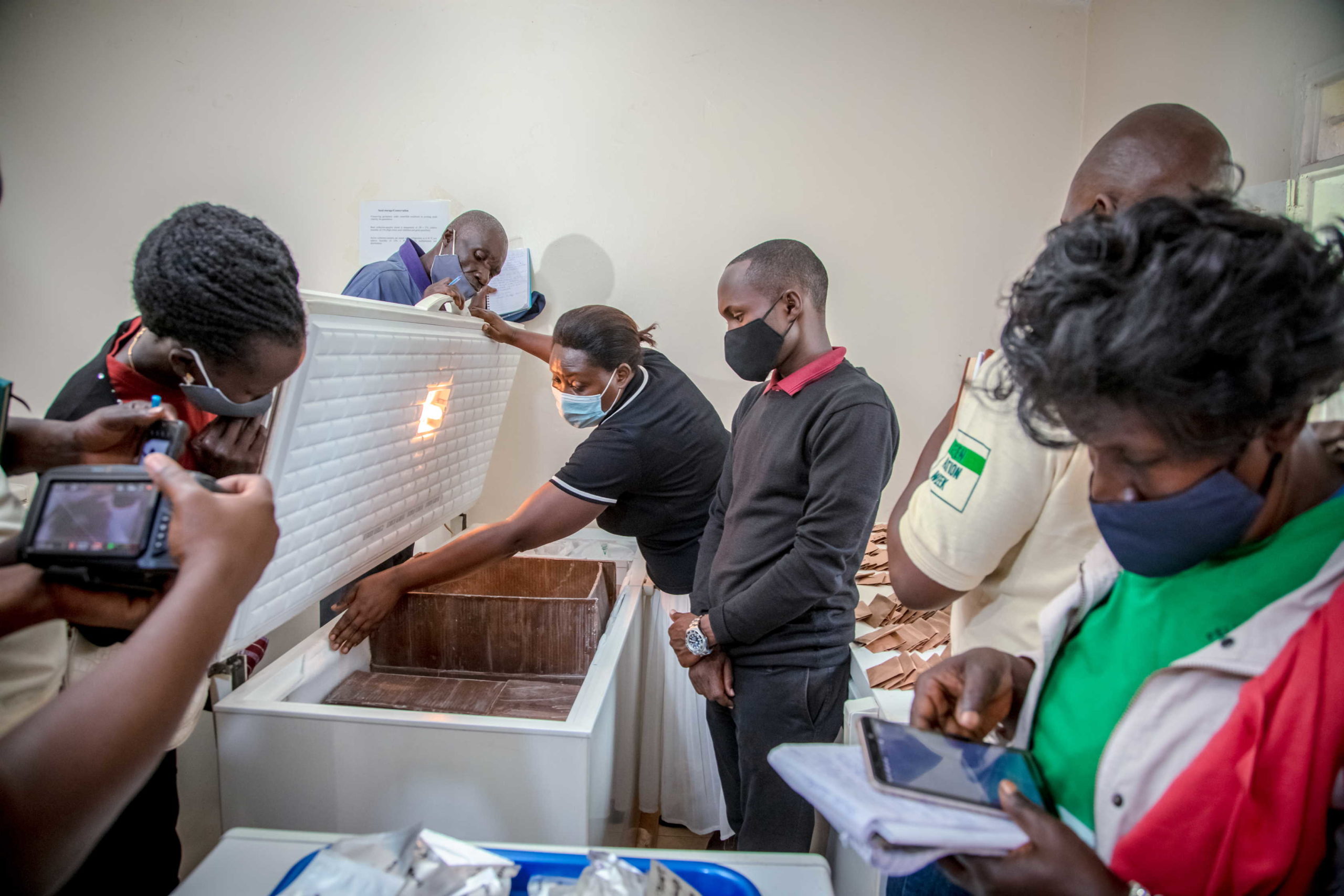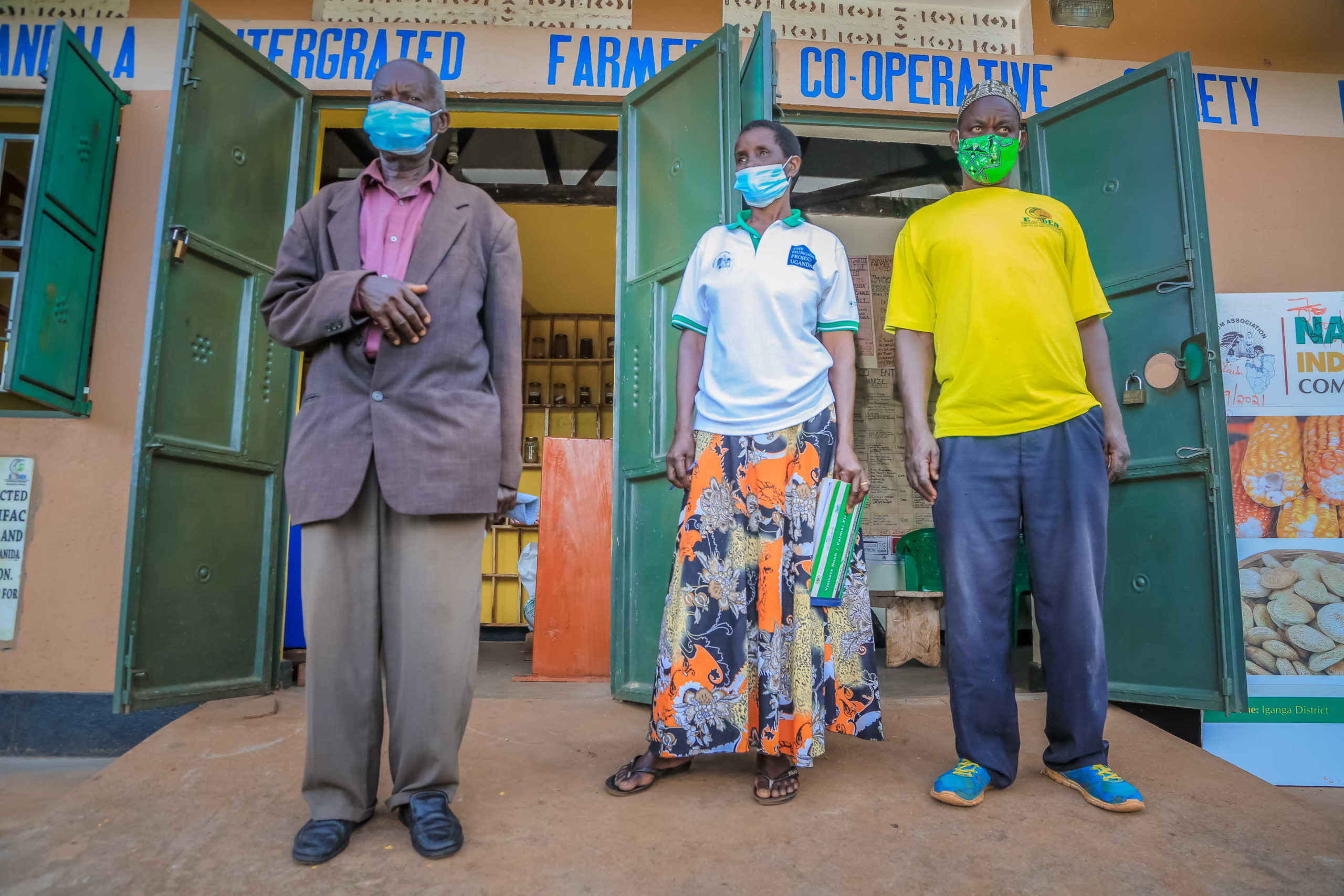The Seed Caravan
In 2020, PELUM Uganda (Participatory Ecological Land Use Management) told the story of their seed bank in Mpigi district. In 2021, they went on the road with a multi-region Seed Caravan. Below is their story in their own words and images.
We are calling for:
The inclusion of farmers’ varieties in the national catalogue; give priority to farmers’ varieties in the national policies and laws; strengthen the weak farmer institutions; link community seedbanks to the national gene bank and shift to more resilient crop varieties.
Community Seed Sharing Caravan
Atuyamba Alex is a member of “Lets Change My Village”, a community based organization located in Rukiga District. Alexander was joining others from over 50 civil society organizations in 30 countries in Africa, Asia, Europe, Australia, and the Americas who participated in Green Action Week 2021 under the theme: ‘Sharing Community’.
To Alex, the community seed sharing caravan was the most significant and stood out most of all the weeklong activities. The learning journey which started from PELUM Uganda offices had stop overs at the National Plant Genetic Resources Center, Nawandala community seed bank in Iganga district, Orungo community seed bank in Amulia district, Adamasico Community seed bank in Soroti district with climax of a mini seed diversity fair, cooking demonstrations and food tasting for indigenous foods in Katine.
“During the caravan, I interacted with 10 community seed bank managers and seed management committee members from various regions of Uganda affiliated to 8 PELUM Uganda member organizations (IIRR, CIDI, CEFORD, EADEN, RUCID, AFIRD, LCV, ESAFF) and one representative from the National Gene bank where we learnt from each other, bartered and exchanged diverse and shared experiences about community seed bank management practices in various contexts.
“The community seed sharing caravan offered a unique experience and creative platform for us farmers to network and interact with experts from the National gene bank in Entebbe including an opportunity for smallholder farmers to share and exchange seed of desired traits as well as knowledge transfer and information on skills
related to indigenous seed and seed bank governance and management” said Alexander.
Following the knowledge and skills on seed conservation and records management acquired from the National Plant Genetic Resources Center (PGRC), he intends to emulate the procedures below at Rukiga community seed bank.
Step 1: Once a given batch of seed variety arrives at the seed bank, it is assigned a number, before it is cleaned.
Step 2: After cleaning, a viability test is done. If the test results are good, the sample qualifies for
long-time storage. Samples not doing well are taken back to the field as they cannot be stored for a long time.
Step 3: Samples good in viability test are then dried thoroughly to attain moisture content of 3-7% MC. Most seeds from the field arrive at about 15% MC.
Step 4: The dry seeds are then sealed in Aluminum foil and kept under cold storage. Note that, before sealing, samples are taken for confirmation for proper record keeping. The stored seeds are checked for viability after every 10
years.
Catching up with Mrs. Olivia Muwanga (click for here 2020 story)
To achieve sustainable consumption, our production and consumption cultures should focus on promoting indigenous knowledge on seed and agriculture including improving our relationship with nature and conserving our environment.
Meet Olivia Muwanga, a 64-year-old small holder farmer from Masaka district and a member of Eastern and Southern Africa Small Scale Farmers Forum (ESAFF) an umbrella organization that unites community based small scale farmer organizations and empowers them to become self-reliant. Oliva was one of the farmers supported by PELUM Uganda to participate in the 2020 GAW seed sharing diversity fair which was held in Buwama where she exhibited various types of indigenous seeds such as native maize seeds called ‘Nalwangu’, natural nuts, sim sim and unmodified amaranth seeds among others.
Muwanga enjoyed interacting with other farmers as she shared her knowledge of indigenous seeds and was further motivated by the establishment of a community seedbank at Buwama and she promised to emulate the same in her community by establishing a small seed bank in her home for the community to learn and benefit and thus requested to be part of the 2021 GAW to tell her story.
“Following the 2020 GAW seed sharing fair in Buwama, I was inspired to establish a community seed bank in my community as a result of the knowledge, experience sharing and skills obtained.
I started conserving indigenous seed in 2013 conserving a few seeds using indigenous knowledge however in 2014, I was among the few blessed farmers who were trained in Community Managed Seed Security (CMSS) by PELUM Uganda which empowered me with practical knowledge and skills in community-led seed security, technical capacity to identify, collect, conserve, multiply and disseminate diverse seeds of good quality to communities whenever needed in harmonized approach.
With knowledge and skills gained and exposure during the establishment of Buwama community seed bank, I established multiplication gardens for indigenous maize, beans, simsim and bush pulses which I later harvested and sorted out seemingly faultless seeds by their size and kept them in my seed bank for the community and next season. Therefore, my participation in the 2020 GAW gave birth to small community seedbank which has greatly improved farmers’ access to quality seed in Masaka at all time in the required quantities hence ensuring seed security and sovereignty in the long run” said Olivia.
The seed bank is repository for seed on behalf of the farmers. After harvesting and sorting, members are required to deposit some of the seeds in the seed bank which is made available to the farmers during planting season hence ensuring timely, diverse, quality seed at all times to farmers whenever needed. The seed bank is also an example of on-farm management of agrobiodiversity and has preserved crop diversity in our community. In addition, it allows the processes of both natural and human selections to continue as part of the agricultural production system.
Interview: Eva Zaake at the Plant Genetics Research Centre
The Plant Genetic Resources Centre (PGRC) is an institution under the National Agricultural Research Laboratories (NARL) of the National Agricultural Research Organization (NARO). It is an entity comprising the historical Entebbe Botanic Gardens (EBG) and the Uganda National Gene bank (UNGB), located at 34km north of Kampala and 5km from Entebbe International airport.
This is a paraphrased conversation between Eva Zaake (EZ), the in-charge at the National gene bank and Peter (P) a member of Orumu community seed bank on conservation, collection and maintaining stocks of diverse plant germplasm.
P: How can farmers access seed at the Plant Genetic Resources Centreand maintain stocks?
EZ: Farmers can either use our website or come directly to PGRC, complete a form requesting for the specific seed varieties and the reasons. After carefully study of the request, farmers are requested to collect the seed which are given in small quantities for multiplication. PGRC later on makes monitoring visits to the farmers to assess progress and to provide technical support. Once mature, the farmer is expected to return some seed to the gene bank and keep on multiplying the other seed.
P: How can farmers access seed at the Plant Genetic Resources Centreand maintain stocks?
EZ: Farmers can either use our website or come directly to PGRC, complete a form requesting for the specific seed varieties and the reasons. After carefully study of the request, farmers are requested to collect the seed which are given in small quantities for multiplication. PGRC later on makes monitoring visits to the farmers to assess progress and to provide technical support. Once mature, the farmer is expected to return some seed to the gene bank and keep on multiplying the other seed.
P: The location of the National Seed Bank is a far away from the farmers in the villages. How is the gene bank linked to community seedbanks to facilitate seed sharing and multiplying?
EZ: We have launched a portal which is going to link the National gene bank with all community seed banks in Uganda with details accession and existing varieties
P: How is seed stored at the national gene bank?
EZ: In the National Gene bank, seeds of species that can be dried to very low moisture content and kept under frozen conditions (referred to as orthodox seeds) are stored in freezers at -20°C. Under such conditions the seed can stay alive for up to 50 years. At the National Gene bank over 5000 accessions are being conserved in both the active (short term storage 5°C) and base (long term storage -20°C) collections. The Gene bank ensures that seed placed in storage are of the highest quality and achieve maximum longevity. The seed are occasionally regenerated to ensure their genetic integrity is maintained. Species whose seed cannot survive desiccation and very low temperature levels (referred to as recalcitrant) and are conserved in the Botanic gardens as live collections. The germplasm held is available for different users on request.
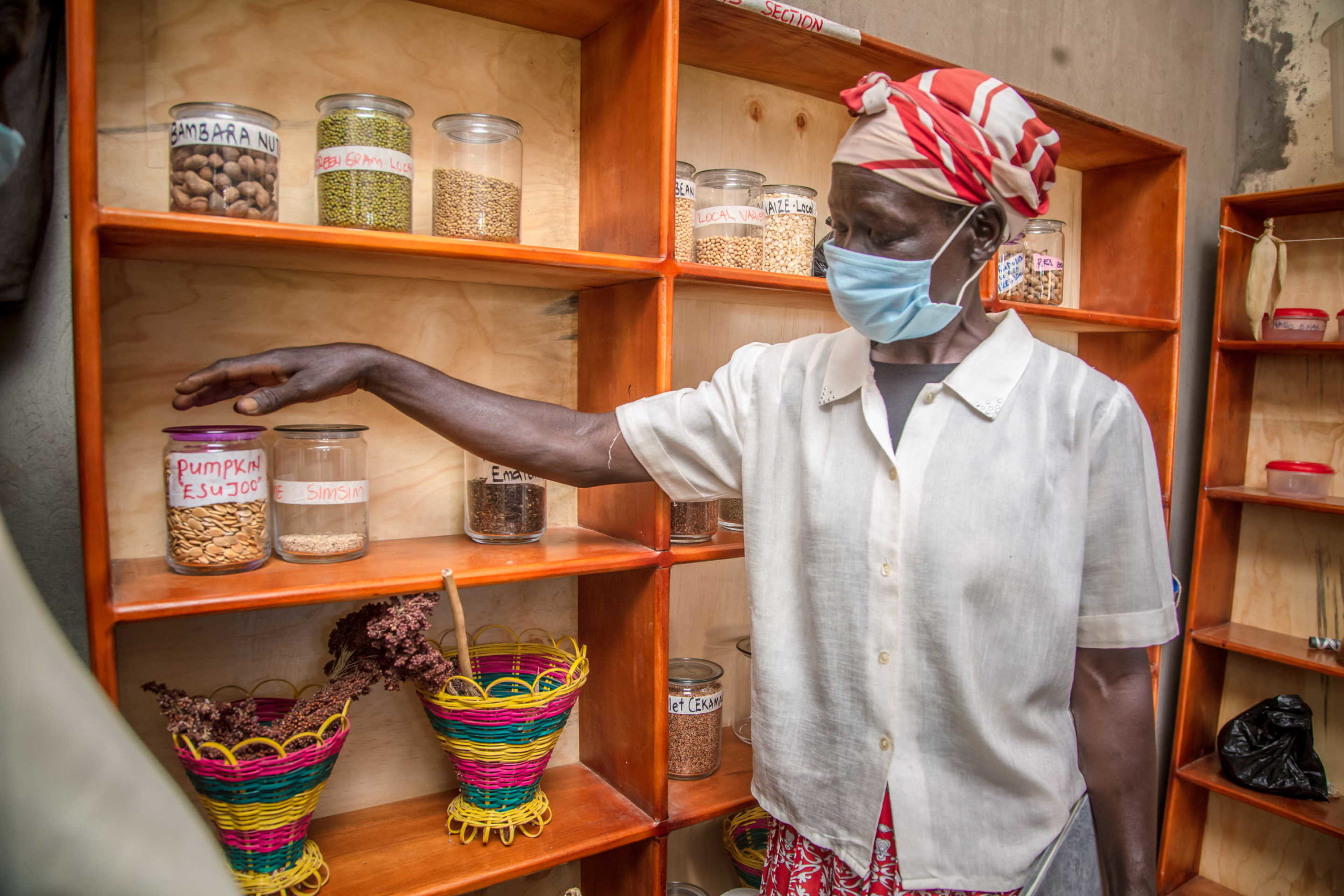
"The benefits of farming outweigh the challenges"
AGEO PHOEBE
Phoebe is a farmer and a single mother of four. According to her culture, men prefer selling seed to get money especially when faced with challenges. Due to this, men are usually denied access to the granary to prevent them from selling off the stored seed. ‘Sometimes women come up with excuses that the seeds are few to keep men from accessing the granary.’
As a farmer, Phoebe’s only challenge is the extinction of indigenous seed varieties. To her, the benefits of farming outweigh the challenges. She has for example been able to educate her children using money obtained from production and sale of indigenous seed. she is able to plant early since seed is available at all time hence has the capacity to maintain, stock and sale seed which has given her financial independence and money to take care of her family.

"Farmer managed seed systems conserve diversity"
AJOK MOLLY
“I was born a farmer. I grew up in the countryside and I have never stopped farming. Now I am also part of a farmer organization. As a son to a farmer, I grew up seeing my parents planting and preserving our indigenous seed varieties such as indigenous black bean (Ocuc) for millennia.
These indigenous and traditional seed systems have preserved and maintained our agriculture biodiversity as they are the main source of diverse germplasm which broaden the genetic base of our production which we have depended on way back however today we witness rampant production challenges particularly those relating with climate change impacts such as the emergence of new pests and diseases which have threatened our indigenous seed varieties.
Read more >
Through our local seed networks coupled with the knowledge gained from community managed seed security model under the R2F project, we (Purbe farmers group) embarked on the journey to revive this popular indigenous bean variety in our community.
From handful of indigenous black bean solicited from our social-networks/ farmer saved seed to large shucks of multiplication garden of Ocuc. Over 30 farmers in the group have established between 2-3 acres of black bean variety. The bean variety has ready market in Omoro and Gulu district and we have concentrated on multiplying the variety with the aim to increase its availability in the two districts. We already have orders from the district to supply Ocuc to other farmers in their effort to revive this lost goldmine.”

"Women hold the seeds of a stronger food system for Uganda"
JOY
Joy is from the Western region in Uganda. In her home area, women have control over the seeds and make decisions on planting and selling of harvest. Having this role has empowered her as a woman because she is able to make decisions freely.
Furthermore, having women control over seed is very important in improving family health and nutrition because a women are the gatekeepers to family nutrition and the guardians of crop diversity. They play a defining yet underappreciated role in Uganda’s food system. So, at every stage of the food chain there are untapped opportunities to achieve greater food security by better serving women through research and innovation.
In what is considered to be the biggest movement on climate change ever, young people around the world are demanding action. Climate change, loss of biodiversity, and overconsumption are major concerns among youth, more so than other generations.
Youth are also more ambitious, more prepared, more willing to pay and sacrifice more, and they are demanding more radical action from politicians and decision-makers to bring about change in our current production and consumption system.
Empowering youth and helping them to better understand the need to adopt more sustainable ways of living that are in harmony with nature is a priority, as youth are the next generation and key agents of change for the future. Education for sustainable consumption is also required across society more broadly, to inform the actions and choices of all members of society.
However, while education is a fundamental objective of sustainable development, it is not sufficient on its own to change behaviors and choices. There is also a need for the development of enabling policies and infrastructures to support sustainable lifestyles
